

Table of contents
- Responsible algae species
- Green Dot Algae
- thread algae
- fur algae
- hair algae
- Lint Algae
- Fighting green algae in the aquarium - what can you do?
- Darken the aquarium
- UVC water clarifier
- diatom filter
- Use water fleas
- Combat green algae in the pond
- Causes of green algae in the pond
- Fast help with green algae
- Long-term solution = Eliminate the causes
- Conclusion
Under good conditions, green algae can multiply explosively and massively. The water is slowly getting greener and cloudier. Visibility is severely limited. These floating algae are usually caused by too many nutrients in the water and too much light.
Responsible algae species
Green Dot Algae
Green dot algae form green dots on the aquarium pane and on the leaves of slow-growing plants. They are very hard algae, which is why they are rarely eaten. The zebra racing snail is helpful. The algae can be scraped off the disc with a blade. In order to suppress the algae, there must not be too much nutrient in the water, so reduce the fish population, do not overfeed and change at least 30 percent of the water weekly if possible.
thread algae
Thread algae are thread-like structures of different lengths. The threads can grow long, up to 30 cm, which is quite a lot for an aquarium. However, they are also easily removed by wrapping them around an unvarnished stick drawn through the water. Plants are food competitors and should be plentiful. Algae eaters also play their part in the decimation.
fur algae
Furry adults settle on the bottom of the aquarium, on leaves and decorative objects, forming a dense carpet up to 3 cm high. These algae grow very quickly. They cannot be removed manually. The trigger can be lighting for more than 12 hours a day. In addition, fur algae often occur in aquariums with little or no vegetation.
hair algae
Hair algae form cotton ball-like or cushion-like structures up to a size of about 4 cm. Plant growth helps against hair algae, and the algae are also eaten by fish and invertebrates.
Lint Algae
Lint Algae the lint-like algae prefer to grow on the leaves and stems of plants. These are often weakened. A slight occurrence is normal and not a cause for concern. Since these algae are readily accepted by algae eaters, they are easy to decimate.
Fighting green algae is not easy. There are quick fixes that can be used, but they only bring relief in the short term and can even worsen the problem in the long run. It is better to take consistent countermeasures, even if it takes time and energy, and to get through a long-term solution.
Fighting green algae in the aquarium - what can you do?
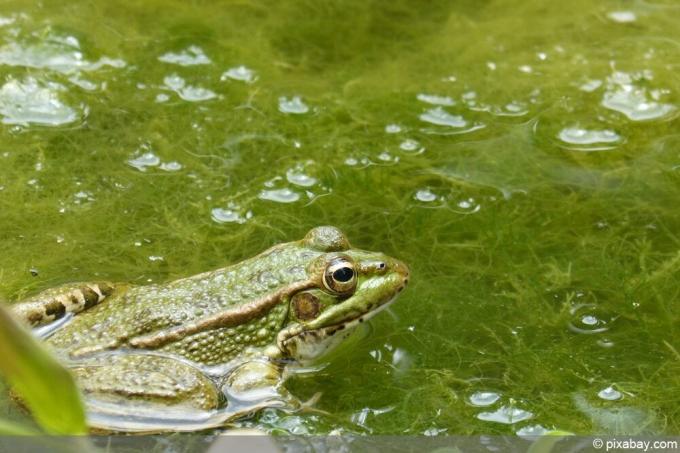
Strong algae growth often occurs in the aquarium if there is too much phosphate and too much ammonium in the water. Since there are only a few plants in most aquariums and they do not manage to absorb all the nutrients, many are left over. The existing algae begin to multiply. The water is getting greener and greener, the fish can hardly be seen.
Darken the aquarium
Green algae need light. If they don't get it, they die. In an aquarium, covering it completely, i.e. darkening it, helps. Of course, the lighting must also be switched off. Two things are important: the water must be changed as much as possible and ventilation must be guaranteed. The oxygen level for the fish is important. The darkening should be maintained for 4 to 7 days.
UVC water clarifier
The water clarifiers are controversial and their use needs to be carefully considered. In any case, long-term use is not advisable, since not only the algae are killed, but also the bacteria, which in turn are responsible for the decomposition of the algae. In addition to algae, parasites and floating bacteria are also killed. After use, a water change is usually recommended.
diatom filter
A diatom filter is suitable for quickly cleaning the water. It quickly filters out the floating algae, but often clogs up. It is better to monitor him in his work and, if necessary, to clean the filter again and again.
Use water fleas
Water fleas live on algae. So if you have the opportunity to remove the fish from the aquarium, the problem can be easily combated. The fish should be removed so that they do not overeat.
Combat green algae in the pond
The green coloring of pond water also comes from the explosive proliferation of green algae. Here too much sun heating the water excessively is the culprit. It heats up very quickly and strongly, especially in shallow ponds. However, a nutrient oversupply is often to blame in the garden pond. The combination of too much sun and too many nutrients causes an extreme increase in green algae, cloudiness of the water and green coloring. First, the causes of this multiplication must be found so that they can be eliminated.
Causes of green algae in the pond
There are several causes that can be triggers. Often it is a combination of several things. The pond can usually cope with one cause itself, but if they accumulate, it is overwhelmed and needs help. A healthy pond helps itself. If he doesn't do that, the ecological balance is disturbed, something is wrong. Usually there are too many nutrients in the water. There are various reasons for this:
- Too many fish, consequently too much fish waste
- Too much fish food that was not consumed
- Too much sun exposure
- Too few plants, both border planting, as well as water and floating plants
- A lot of mud on the ground, consists of dead plant material, leaves, washed-in soil, dust, etc. Lots of nutrients are produced during decomposition.
- Dead plants in the water and on the shore
- Heavy rain that washes soil into the pond and rainwater contains many nutrients at certain times, e.g. B. pollen
- Well water used for the pond can contain a lot of phosphorus
- Missing filter system, especially with fish stock
Fast help with green algae

A UVC clarifier brings quick help. This can be placed in front of the actual filter if there is a filter system. In the clarifier, the floating algae are "clumped" by UV light. These bundles can be filtered out by the pond filter. With the larger particles, the filter does not have the problem that there is with the microscopic algae. They just slip through.
Tip:
The wattage of the UVC lamp is decisive for its effectiveness. 1 to 2 watts are required for every thousand liters of water. If there are fish in the pond, it is 2 to 3 watts per thousand litres, with koi ponds even 4 to 5 watts. In addition, the lamps should be changed annually.
Algae control agents also do a good job in the short term, but not permanently. There are different algaecides. You should always follow the instruction manual for all of them. Overdoses must be avoided.
Chemical flocculants with the active ingredients iron chloride or Aluminum salts work quite well. They ensure that the floating algae clump together to form large flakes, so they can be disposed of through the pond filter. If the flakes sink to the bottom of the pond, they are subsequently used as nutrients by other algae. Flocculants work quickly and are harmless to other pond inhabitants.
A water change is often recommended. However, it must be said that fresh water also contains a lot of nutrients, so that it is not always useful. The water quality is crucial. Rainwater is quite acidic. If it hasn't rained for a long time, dust collects on the roofs, including pollen. The rain washes these nutrients away and into the catchment tank. This is how they get into the pond. Well water often contains nutrients and even normal tap water has its pitfalls. A water test provides information about the water quality.
Long-term solution = Eliminate the causes
It is best to test the water in the pond first. You can usually find out quite well from the water values why the green algae multiply so much. A water sample does not necessarily have to be sent in for testing, a water analysis set is also sufficient. These are commercially available with good instructions. Good water quality is characterized by the following values:
- pH - 7 to 8
- Nitrite (NO2) < 0.15 mg/l
- Nitrate (NO3) < 0.50 mg/l
- KH value – 5 to 12
- GH level – 8 to 12

Once the values have been determined and compared, countermeasures can be initiated. To balance the values, water conditioners can be used. Then it is important to eliminate the causes.
Too few plants in the pond – use aquatic plants and floating plants, including fast-growing ones if possible. They are food competitors.
Too much sun – shade the pond
Too much sludge on the pond floor – find out the cause
Pond soil for planting - do not plant in soil, not even in pond soil. Most aquatic plants also thrive in gravel or between pebbles
Leaves – fish off leaves in the fall every day if possible so that they do not sink to the ground, set up a protective net, move deciduous shrubs, plant evergreen shrubs instead (shading)
Washed-in soil – install a capillary barrier, remove some soil all around so that the edge of the pond is higher
Dust, pollen - cannot be prevented, but is clarified by a filter
Remove sludge from the pond, by hand or with a sludge vacuum cleaner. The best time for this is spring.
Missing pond filter - installation of a filter system appropriate to the size and stock
Too much fish - there should not be more than 3 kg of fish per 1,000 liters of water. Catch some fish and give them away! Ponds without fish are much easier to maintain. The biological balance is easier to maintain.
Lots of wasted fish food - feed less
Dead fish or invertebrates in the water - fish out
Dead plant material – Regularly check the riparian vegetation and remove dead plants or parts of them. Also check the plants in the water.
Dead Algae – must be removed as they release enormous amounts of nutrients as they decompose
Conclusion
Green algae occur in every pond or aquarium up. They don't cause trouble as long as they don't multiply en masse. There are quite fast-acting countermeasures, but they usually only help for a short time and can worsen the water quality afterwards. It is better to find out the cause and eliminate it. All sorts of things can also be done preventively. When planning, you should pay attention to certain things so that there can be no excess nutrients later. Expert advice can be of great help. In addition, both aquariums and ponds must be maintained regularly and usually intensively. The water very, very rarely stays clear on its own.
 garden editorial
garden editorial I write about everything that interests me in my garden.
Learn more about algae in the pond
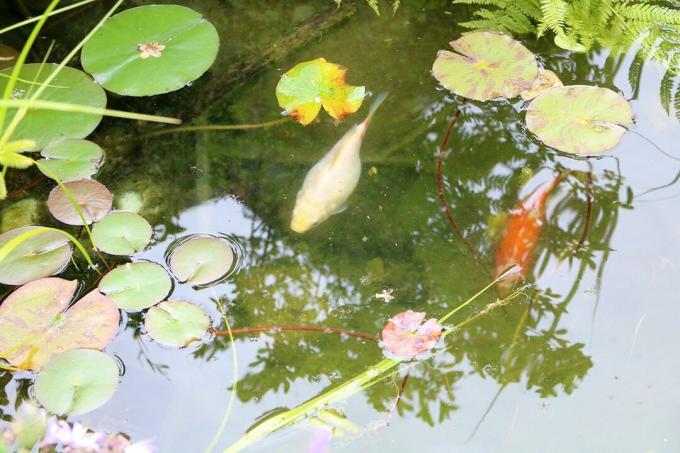
Floating algae in the pond: 10 tips for removing them
Algae infestation is not only unsightly to look at, but can also pose a threat to aquatic animals and plants. For this reason, it is advisable to always remove floating algae - read here how this works best!
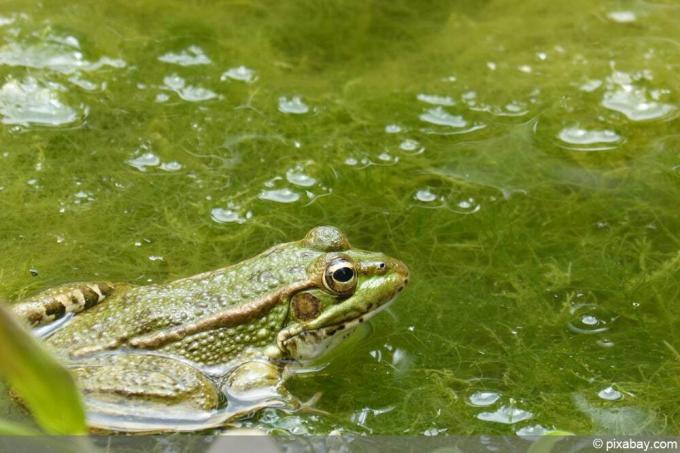
Algae eater in the pond: 5 hungry pond fish
Algae growth in the garden pond not only looks unsightly, but excessive growth can tip the entire ecosystem over. In this article we will tell you which types of fish, snails and mussels like to eat algae and what else helps against the "green plague".
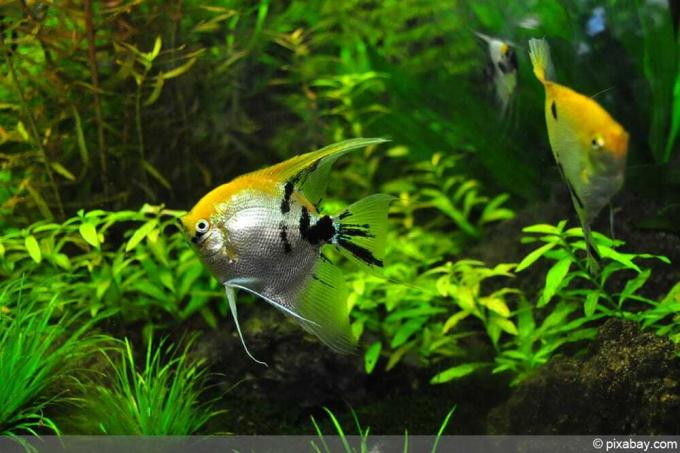
Combat thread algae in the aquarium
The right countermeasures must be taken at an early stage to ensure that the thread algae in the aquarium do not grow too rampant and become a nuisance. Otherwise, the aquatic plants can severely disturb the sensitive ecosystem of the aquarium and also negatively affect the visual appearance.
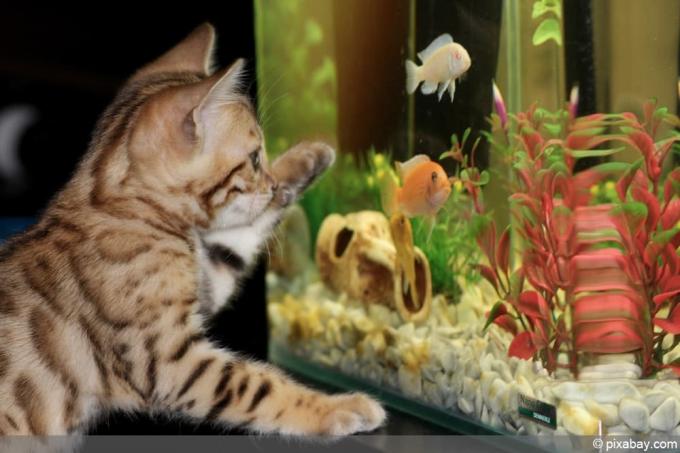
Get rid of green algae in the aquarium properly
Green algae occur in every aquarium. This is normal and part of it. It can even speak for a particularly good water quality. Only a massive increase in algae caused by too much light and too many nutrients is not normal. The green coloring and turbidity of the water means nothing other than that the biological balance has gotten out of joint. There are different green algae, also with quite different requirements. However, all benefit from an excess of food and can best be combated by depriving them of food.

Natural remedies against thread algae
Algae in the garden pond are an absolute nuisance, but can hardly be avoided. Besides, they are useful too. They serve as food for microorganisms and also produce vital oxygen. It gets annoying when they multiply en masse.

The best home remedies for algae in the aquarium
Algae in the aquarium are absolutely natural and normally do not have to be fought. It only becomes difficult when they multiply explosively. There is a reason for this increase. It has to be found and turned off. That sounds simple, but it isn't.
